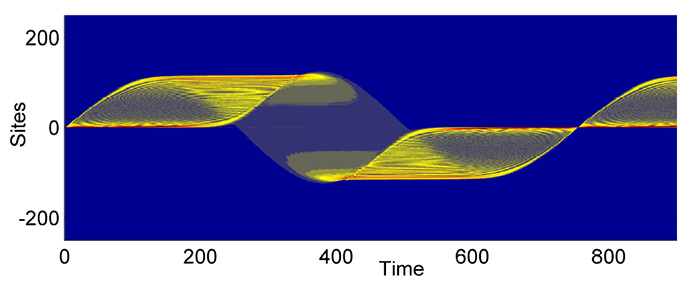주메뉴
- About IBS 연구원소개
-
Research Centers
연구단소개
- Research Outcomes
- Mathematics
- Physics
- Center for Theoretical Physics of the Universe(Particle Theory and Cosmology Group)
- Center for Theoretical Physics of the Universe(Cosmology, Gravity and Astroparticle Physics Group)
- Center for Exotic Nuclear Studies
- Center for Artificial Low Dimensional Electronic Systems
- Center for Underground Physics
- Center for Axion and Precision Physics Research
- Center for Theoretical Physics of Complex Systems
- Center for Quantum Nanoscience
- Center for Van der Waals Quantum Solids
- Chemistry
- Life Sciences
- Earth Science
- Interdisciplinary
- Institutes
- Korea Virus Research Institute
- News Center 뉴스 센터
- Career 인재초빙
- Living in Korea IBS School-UST
- IBS School 윤리경영


주메뉴
- About IBS
-
Research Centers
- Research Outcomes
- Mathematics
- Physics
- Center for Theoretical Physics of the Universe(Particle Theory and Cosmology Group)
- Center for Theoretical Physics of the Universe(Cosmology, Gravity and Astroparticle Physics Group)
- Center for Exotic Nuclear Studies
- Center for Artificial Low Dimensional Electronic Systems
- Center for Underground Physics
- Center for Axion and Precision Physics Research
- Center for Theoretical Physics of Complex Systems
- Center for Quantum Nanoscience
- Center for Van der Waals Quantum Solids
- Chemistry
- Life Sciences
- Earth Science
- Interdisciplinary
- Institutes
- Korea Virus Research Institute
- News Center
- Career
- Living in Korea
- IBS School
News Center
IBS engineer Landau-Zener-Bloch oscillations- The IBS Center for Theoretical Physics of Complex Systems (PCS) engineered Landau-Zener-Bloch oscillations within an intricate lattice structure that demonstrated intriguing properties - Lattice structures are widely studied due to the applications allowed by their periodic symmetry. The physics involved in electrons moving through crystals is all related to the properties of the lattices: How waves move through them and the resulting energy band structures. By constructing the lattice in precise topological or structural ways, it is possible to achieve specific regions which can confine, limit, or eliminate propagation of waves navigating the system but which leaves the system itself undistorted. There exist regions in the lattice which, by the nature of their topological or structural symmetry, give rise to flat bands. Flat bands get their name from their flat energy diagrams; they are dispersionless, and give rise to novel quantum Compact Localized States.
Bloch oscillations {sinusoidal sweeps between alternate extremes of a particle in a lattice} arise in the presence of a field, but the understanding of how the compact localized states perform these oscillations under some perturbation is far from being clear. Previous studies have found Bloch oscillations of quantum particles but only on a very basic level; namely, in one-dimensional lattice systems with an applied electric field. Although those resulting Bloch oscillations were common, more in depth research involving more complex structures had not been attempted before the IBS report. The IBS Center for PCS engineered Bloch oscillations within an intricate lattice structure that demonstrated a very intriguing anharmonic structure under electric and magnetic fields. An anharmonic structure concerns an oscillation which drastically differs from the gentle dynamics of a well-known pendulum. This result is quite interesting as Bloch oscillations are typically symmetric, without such dramatic behavior. It is accomplished by precisely manipulating the electric and magnetic perturbing fields and controlling the degeneracies. An almost complete halt is achieved during the initial flat stage. The following scan of the whole band structure follows the Bloch oscillation scenario which is harvesting on tunneling between energy levels or Landau-Zener tunneling, before returning to the flat band state to repeat the sweep again. However, under a precise tuning of the magnetic field strength, the structure can be made to be gapless again and almost flat. In this case, Landau-Zener tunneling is enforced and drives the Bloch oscillations. The resulting asymmetric and anharmonic diagram is both a novel and promising discovery. Speaking from the Center’s base in KAIST’s Munji Campus, PCS Director Sergey Flach, and co-author of the manuscript published in Physical Review Letters, said: “The result demonstrates, not only the potential of this research direction to allow for the engineering of new qualitative states of quantum matter, but an elegant implementation to an old problem, how to arrest a quantum particle in a highly localized way on a lattice structure through the application of external fields.” Neil Mannix Notes for editors - References - Media Contact - About the Institute for Basic Science (IBS) |
|||
|
|
| Next | |
|---|---|
| before |
- Content Manager
- Public Relations Team : Suh, William Insang 042-878-8137
- Last Update 2023-11-28 14:20












